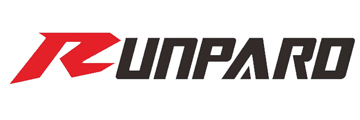While taking advantage of machine learning to become more self sufficient, tomorrow's industrial robots will also improve their People skills so that they can work more closely with their human counterparts. According to the International Federation of Robotics, the global market share of industrial robots is booming and currently accounts for more than 50% of the total robot market. Global annual sales of industrial robots are forecast to rise to $23.18 billion in 2020, up from $16.82 billion in 2017. 1. The rise of Cobots and human-machine collaboration is an important trend in industrial robotics and a driving force behind this growth. "Cobots, " designed for safe physical interaction with humans in shared workspaces, are finding their place in a wide range of industries. In environments where humans need to work closely with robots in more sporadic and intermittent ways, safe coexistence is becoming increasingly important, such as bringing in different materials for robots, changing programs, and inspecting new operations. According to Per Vegard Nerseth, general manager of robotics at Swiss robotics giant ABB, another benefit of safe human / robot coexistence is that it allows for more flexible factory production processes without the constraints of a safety fence. Collaboration is critical to increase manufacturing flexibility to accommodate high-mixing, small-batch production. People can add their unique ability to adapt to change and improvisation, while robots add indefatigable endurance to repetitive tasks. 2. Artificial intelligence, artificial intelligence and machine learning will also have a significant impact on the next generation of industrial robots. This will help the robots become more autonomous and work with their colleagues, according to the Robotics Industry Association (Ria) Vice President and Mexico's A3 Association for Advanced Automation (A3) . One trend I've been following closely in 2019 is the convergence of AI, robotics and machine vision. This convergence of relatively different technologies opens up new opportunities that have never been used before. Startups that do this include Plus One Robotics and RightHand Robotics. 3. New Industrial Users, industrial robots working in smart factories. As other industries embrace the efficiency and flexibility that industrial robots can provide, reducing dependence on the automotive industry is another key trend. For decades, the success of the industrial robot market has been closely linked to the development of the automotive industry. That has started to change in recent years as other industries have accelerated the adoption of robots, Doyle said. Traditionally, the auto industry accounted for more than 60 percent of the North American market, but by September 2018 that figure had dropped to 52 percent, and non-car orders had reached 48 percent -- two segments of the market that are closest to historical rias reported back in 1984. The non-automotive sectors that have set new records include life sciences, food and consumer goods, plastics and rubber, and electronics. We believe that as robots become smarter, safer, and in a variety of shapes, they will become more attractive to new users in a variety of industries. 4. Digitisation, digitisation is also having an impact, as connected industrial robots take their place in the digital manufacturing ecosystem as part of the Industry 4.0. ABB's Nerseth says this improves efficiency, productivity and reliability throughout the production cycle, from engineering, commissioning to operation and maintenance. As industrial robots work in the shop floor, digitization can lead to greater collaboration across the value chain -- Horizontal collaboration between suppliers, manufacturers and distributors, or vertical collaboration within the factory, such as E-commerce front-ends and CRM systems, collaboration between business ERP systems, production planning and logistics automation systems. Both types of collaboration can create a better customer experience and increase manufacturing efficiency and engineering efficiency to switch between products or launch new products more quickly. 5. The push for simplicity, combined with smaller and lighter designs, also opens up new opportunities for industrial robots, said Yang Luo, chief executive of Chinese robotics giant Siasun. As more cutting-edge technologies are added to industrial robots, they are becoming smaller, lighter and more flexible, such as virtual reality and artificial intelligence. In 2015, Siasun began developing human computer collaboration robots or Cobots. The robot is lightweight, easy to program, and can work with humans, enabling industrial customers to ensure quality while optimizing production costs.
News
Five trends in the future of industrial robotics
Release time: 2020-07-02 08:13:26 Hits: 45
Previous: The manipulator will be a big hel...

